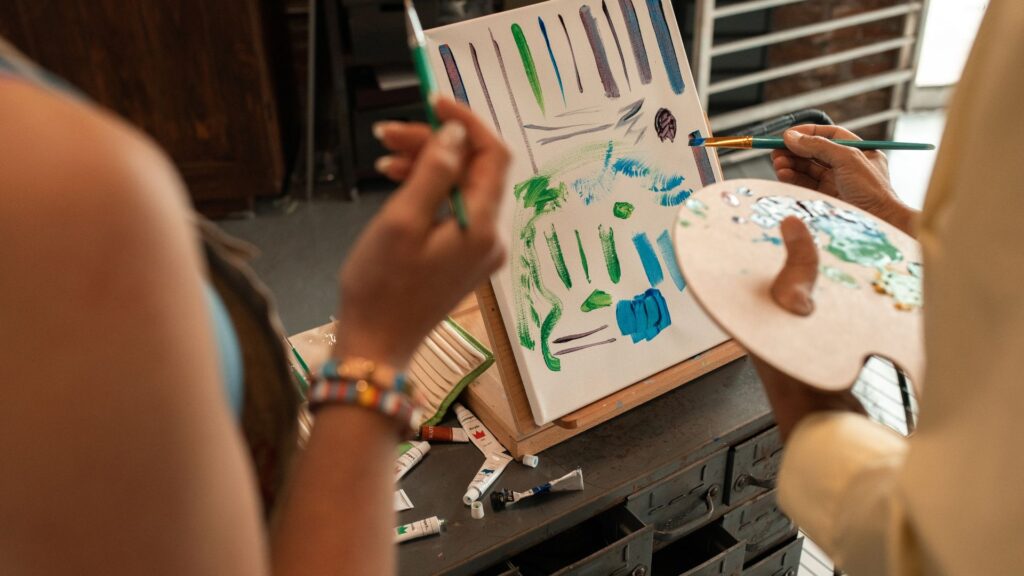Art Teacher Goes Viral After Sharing Her Pitiful School Budget To Spend On Room Supplies
An art teacher was given a classroom budget of only $50 dollars which she must stretch out through the entire school year.
An art teacher’s TikTok video about her meager classroom budget went viral recently, gathering over two million views. The teacher, known only as Haley, teaches art at two different schools. One school gave her $350 for art supplies, which breaks down to approximately $35 each month that class is in session. The other school gave her a mere $50 to stretch over the entire academic year. Like another teacher who recently had to stock an empty classroom, the video generated strong comments echoing the public’s dropping satisfaction with education.
“That’s just WRONG,” a viewer wrote. “That breaks my heart for you and our kiddos!!” Another viewer commented, “I wouldn’t have a fulfilling life if it wasn’t for art class. This is so sad.” Current and former teachers also chimed in, commiserating with Haley and sharing how they used their creativity to do their jobs without an adequate classroom budget. “We have a budget of $0 so I feel you,” one teacher wrote. “I rely on scavenging and donations or using my own money.” Another said, “I worked in a low-income school district, they gave me 0 budget. I used whatever leftovers the previous teacher had.”
Some disgruntled teachers advised Haley to avoid spending any of her own money on supplies, but others suggested crowdfunding as a way to stock the art classroom. Haley politely declined viewers’ donation offers, stating that she had other resources to tap, including the Parent Teacher Association and her principal. She said that she spent her $50 allotment on two stacks of colored paper, and she found the other school’s $350 enough to buy basic supplies for her students. After the art classroom budget video went viral, Haley made her TikTok account private for fear of losing her job.
Even though education experts generally agree on the value of providing students with art instruction on a regular basis, a low classroom budget for the arts is a nationwide problem. Many educators and parents note that sports programs—particularly football—appear to be well-funded while arts-related classes scrape by. In an editorial published in MySanAntonio, a former Texas high school theater teacher shared her opinion on the discrepancy. She also bemoaned the wide payment gap between sports coaches and art instructors, especially since both types of educators work similarly long hours.
With few exceptions, careers in the arts are low paying. In fact, majoring in arts and humanities ranks as the most regretted college major. However, many creative people still feel drawn to pursue artistic careers, accepting that low pay is the downside of doing what they love. Haley said that she created her video not to complain about the art classroom budget, but to help others visualize what she and other art educators experience. “My purpose for making the TikTok was to show people that might not be aware of the state of the arts in public education,” Haley said. “It’s bad. It’s always been bad, but right now, especially after COVID, the state of the economy right now, it’s bad.”

Low public school classroom budgets aren’t exclusive to art classes. As more parents choose alternate education methods for their children, public school budgets receive less funding. Many school systems have relied on COVID relief funds to provide teachers with the supplies they need. But with access to these funds ending by fall 2024, they are faced with drafting new ideas to fill the gap.
According to ArtNet News, New York City allocates $79.62 in arts funding to each public school student. That sounds like an incredibly generous art classroom budget until you realize that schools are allowed to spend that money on things unrelated to arts education. In response, the NYC Arts in Education Roundtable—a community of arts educators—created a campaign to increase arts funding to $100 per student. Their efforts have so far been unsuccessful.







